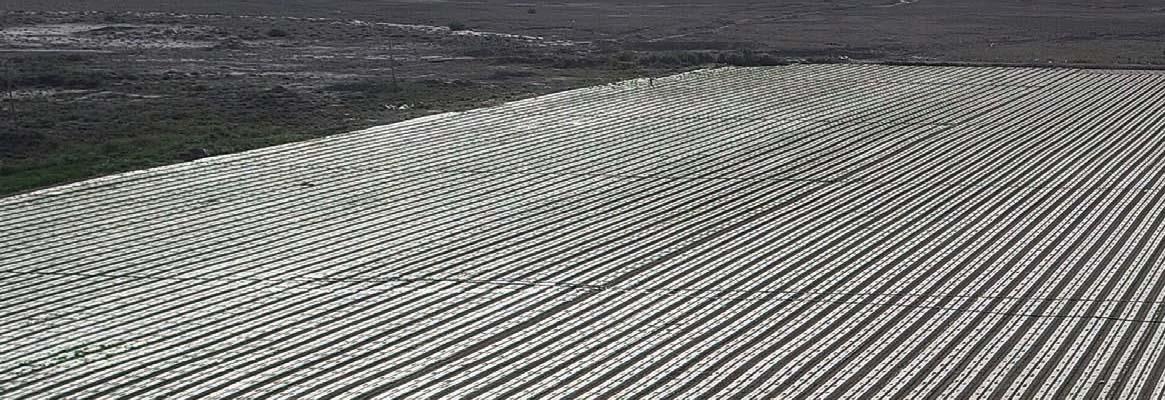Despite the US government’s limited action to prevent import of garment and textile products from China’s Xinjiang province and the continual pressure exerted by human rights groups, retailers and trade bodies cite practical problems in implementing such bans and their demerits. Meanwhile, the US-China trade war and covid-19 have accelerated the pace of shifting apparel production and sourcing out of China, writes Dipesh Satapathy
When the US Customs and Border Protection (CBP) on September 14 issued five withhold release orders (WROs) on products, including apparel and cotton, imported from China that are produced with alleged state-sponsored forced labour in the Xinjiang Uyghur Autonomous Region (XUAR), the announcement was a much anticipated one. It was also an apparent result of the cumulative resentment against China in US government quarters over the latter’s lack of transparency in reporting the novel coronavirus in its initial stages.
CBP cited Beijing’s “systemic human rights abuses” against the Uyghur people and other ethnic and religious minorities in XUAR as the reason. The decision, however, is being perceived as more political than economic as US President Donald Trump has made confrontation with Beijing and besmirching China a core part of his election campaign.
Human rights groups have been urging President Trump to ban cotton imports from Xinjiang, saying the move could pressure Beijing into ending atrocities on Muslim minorities there. A coalition of more than 180 rights groups said in a letter in July that roughly one in five cotton garments sold around the world contain cotton or yarn from Xinjiang. It also accused many global brands of being complicit in that exploitation by sourcing supplies from Xinjiang.
More than four-fifths of China’s cotton output is sourced from Xinjiang. “The only way brands can ensure they are not profiting from the exploitation is by exiting the region and ending relationships with suppliers propping up this Chinese government system,” according to Jasmine O’Conner, chief executive officer of Anti-Slavery International, one of the letter’s signatories.
In July, the US commerce department added to its Entity List 11 Chinese companies, including Changji Esquel Textile, Hetian Taida Apparel and Nanjing Synergy Textiles, for their role in human rights violations. In August, CBP issued an order to halt imports from Shanghai-based Hero Vast Group for using prison labour to make clothing.

The products blocked by CBP’s latest WROs include apparel produced by Yili Zhuowan Garment Manufacturing Co and Baoding LYSZD Trade and Business Co, cotton produced and processed by Xinjiang Junggar Cotton and Linen Co, and hair products made in the Lop County Hair Product Industrial Park, all in XUAR. Import of all products made at the Lop County No 4 Vocational Skills Education and Training Centre in XUAR was also banned. CBP did not identify US companies having business ties with the Chinese entities.
Denying that companies in Xinjiang use forced labour, China reacted soon saying the move would snarl up global supply chains. “This fully exposes the hypocritical faces and sinister intentions of those in the US hoping to curb Xinjiang’s development and progress and sow Chinese ethnic dissension,” a Chinese foreign ministry spokesman said.
In July, the US departments of state, treasury, commerce and homeland security issued a joint advisory warning domestic companies to monitor their activities in China, particularly in Xinjiang, saying they could face “reputational, economic and legal risks associated with certain types of involvement with entities that engage in human rights abuses.”
The US is said to be considering a broader ban on cotton and textiles from Xinjiang and the WROs are a limited step. A broader measure is undergoing further legal analysis. Officials from the department of agriculture, the treasury department and the office of the US trade representative have reportedly objected, saying a broader measure could threaten US cotton exports to China, or jeopardise the Phase I trade deal President Trump signed with China in January. US homeland security officials, however, have denied any such intervention.
Widening the scope of the ban could, however, turn out to be a humongous challenge with inadequate systems to track the origin of the raw material, according to rating agency ICRA. There is also a possibility of China retaliating with countermeasures like adopting high tariffs on US cotton or not allocating import quotas to US supplies.
The Better Cotton Initiative (BCI), which runs a sustainable certification system for cotton producers, expressed concern earlier this year about reports of forced labour in China and commissioned a third-party investigation into the claims. Withdrawing from Xinjiang could “cause more harm than good” as a critical mass of farmers were dependent on cotton production, it said then. In late March, however, it suspended its certification activities in the region after concluding that “credible assurance” of labour practices was not possible.

The biggest problem perhaps is the opacity of supply chains in China. Travel restrictions in Xinjiang complicate the challenge as companies cannot thoroughly investigate their supply chains there, and those which carry out such audits may end up seeing only what the factories wish they see.
The United Nations has said it has credible reports that a million people have been detained in camps in the region, where they are put to forced labour. China denies mistreatment of the Uyghurs and says the camps are vocational training centres to fight extremism.
Experts, however, doubt the effective implementation of the US import ban. Once transported abroad as finished products, either from within China or other countries like Bangladesh, Cambodia and Vietnam that source Chinese cotton, tracking the cotton is impracticable. Checking every potential weak link to Xinjiang in the supply chain is expensive and consumes considerable time.
When the tools themselves are vague and poorly defined or retroactive, as were the WROs announced, even basic compliance and enforcement by CBP and its supply chain partners becomes next to impossible, American Apparel and Fashion Association (AAFA) president and chief executive officer Steve Lamar testified before the House Ways and Means Committee trade sub-committee.
Rejecting the idea of a “blanket WRO,” he said such a decision would wreak unending havoc on human rights, economic development and legitimate supply chains—which are already battered by covid-19—all over the world.
“As a country, we simply do not have the capability or capacity to implement, comply with, or enforce a blanket WRO. Given these constraints, such a WRO would take years before it would have its desired impact in China. Moreover, given China’s ability to shift cotton to other markets, including its domestic market, it is unlikely that a regional WRO would have its desired impact of impeding the use of Uyghur forced labour at all,” Lamar added.
The National Retail Federation, the United States Fashion Industry Association and the Retail Industry Leaders Association also share the same sentiments as AAFA.
Following the WROs, Swedish fashion brand H&M announced it was ending its relationship with Xinjiang-based yarn producer Huafu Fashion, with which it had an indirect business relationship.
But much before the pandemic struck, the tensions arising out of the US-China trade war had prompted many apparel brands to limit their exposure to the region, and in general China, by moving operations to Bangladesh, Indonesia and Vietnam. China also has trade rows with Australia and European nations. In July, sportswear maker Patagonia announced it was exiting Xinjiang, and that it had told its global suppliers that using fibre made in the region was prohibited.

Rising labour and environmental costs and China’s reluctance to produce low-cost goods were prompting retailers to move out even before, but the trade war seems to have accelerated their departure. Uniqlo, Levi’s, Crocs, Calvin Klein and Tommy Hilfiger have moved their entire manufacturing base out of China.
But following the pandemic, splintered balance sheets and capital constraints have proved a dampener for shifting. Moreover, shifting production lines is time consuming and many other countries may not offer integrated infrastructure, top quality labour and sophisticated logistics like China does. Lack of integration with major global supply chains is another bottleneck.
The Chinese share in the US apparel market has been declining since 2018. Due to the impact of the pandemic, the overall US apparel imports dropped by 30 per cent in the first seven months of 2020, while its import of Chinese apparel dropped by 49 per cent. The latest CBP decision may accelerate the trend further and create a $10 billion opportunity in the US apparel market for other countries like India, according to the Indian Texpreneurs Federation (ITF).
Several major apparel exporters from India have either already started receiving increased orders or are in active discussions with large international buyers that want to raise their sourcing from India. The shift, which was previously expected to take place gradually over the medium term, could be expedited in the light of this recent development, ICRA said.
German leisurewear brand Marc O’Polo has placed a huge order for jerseys to its Indian vendor Warsaw International. US-based babywear brand Carter wants to shift a significant portion of its business from China to India and has reportedly asked Tamil Nadu-based SP Apparels to work on developing a new fabric using manmade fibres. KPR Mill Limited’s buyers have told the company that sourcing from India will be much higher this year. Tiruppur Exporters Association (TEA) president Raja N Shanmugam expects a 25 per cent rise in sourcing this season.
According to the European Union’s Centre for the Promotion of Imports from Developing Countries, even for European apparel buyers, basic apparel production can be relatively easy to move to lower-cost locations, but higher-value clothing requires much more specialisation and quality assurance. China became strongly specialised in manufacturing high-value items such as outerwear and accessories over the years. India still has to build capabilities and expertise in areas of winter clothing, activewear, speciality clothing and specialised sportswear, feels the Clothing Manufacturers Association of India (CMAI).
Other not-so-advanced countries in the value chain cannot compete with China now in quality and quantity, often creating risks for buyers in relation to product quality and factory safety. In the high-value segment, China still offers a good balance of cost, reliability, speed to market and low risk of non-compliance and till competing countries.
This article was first published in the October 2020 edition of the print magazine.








Comments